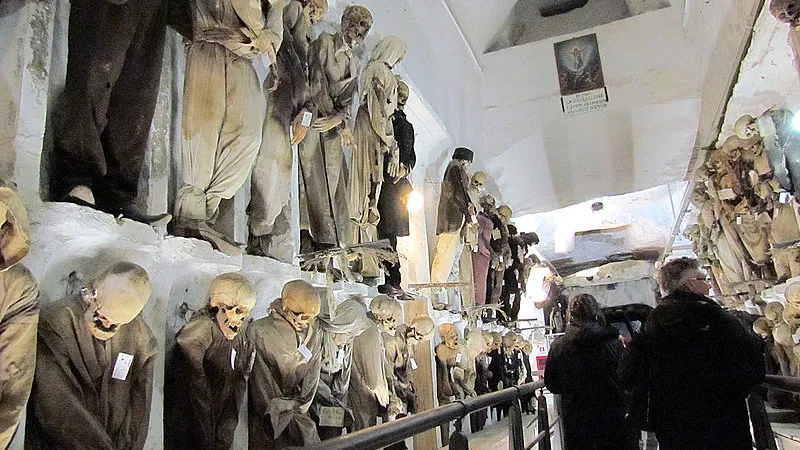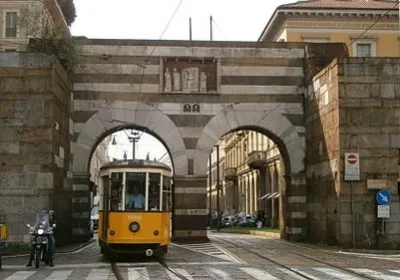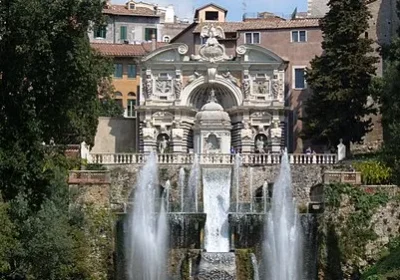Museum of the Dead (Capuchin Catacombs):
In Palermo, one of the most extraordinary museums of modern times, the Catacombs of the Capuchins, is located beneath the Capuchin Monastery. Located in the square of the same name, Piazza Cappuccini, the catacombs are underground burial galleries and are a vast burial ground of Sicilian nobility from the 16th to 19th century. Today, this “mass” tomb is one of the most famous exhibitions of mummies. The branching corridors of the catacombs are divided into compartments: the halls of men, women and children, the hall of maidens, priests and monks, as well as representatives of various professions, the last of which houses the remains of the famous Spanish painter Diego Velasquez.
Skeletonised, mummified and embalmed bodies of the deceased lie, stand and even hang along the walls. They are dressed in clothes that readily suggest the fashions of the times. There is a version that in the XVI century Capuchin monks discovered in the cellar of the monastery a certain airborne preservative that favours embalming the bodies of the dead. Since the same time – since 1599 – the first burials of monks have been carried out here with the permission of the prelates, but after 1739, due to the mass popularity of this “cemetery”, the consent was given by the abbot of the monastery. This is how the catacombs became the most prestigious burial place until the end of the XIX century.
With the increasing popularity of the “catacombs” in the process of burial began to use additional methods, which in addition to the “special” composition of the air contributed to better preservation of the bodies. In embalming the deceased girl Rosalia Lombardo, the Palermitan Dr Alfredo Salafia’s know-how was applied. Looking at Rosalia gives the impression of a child sleeping a serene sleep – so “alive” looks her face. Rosalia’s mummy was nicknamed “Sleeping Beauty” and her burial was one of the last in the history of the catacombs.
The two-year-old girl Rosalia Lombardo, who died in the 1920s from pneumonia and was embalmed at her father’s request by local doctor Alfredo Salfia. It is perhaps one of the most famous mummies in the Capuchin Museum: almost a hundred years have passed and the condition of the girl’s body has not changed. To this day, it seems as if the child is simply sleeping in her glass coffin. Her hair, eyebrows and eyelashes have not changed at all. Some museum guards even claim that sometimes the baby girl opens her eyes. The chapel at the monastery was renamed in the baby’s honour.
All the mummies underground at the Capuchin monastery are arranged according to their lifetime status, gender, occupation and more. Thus, here you will find a hall of virgins, a children’s hall, a hall of married couples and many other rooms. The Capuchin Catacombs have been mentioned many times by famous Spanish, Italian and French writers, thus making the museum very well known throughout Europe.
The Catacombs are closed on Sundays from the end of October to the end of March, 24 and 25 December, 1 January, 1 May
.

















